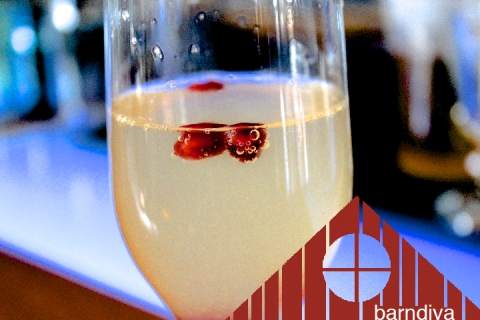
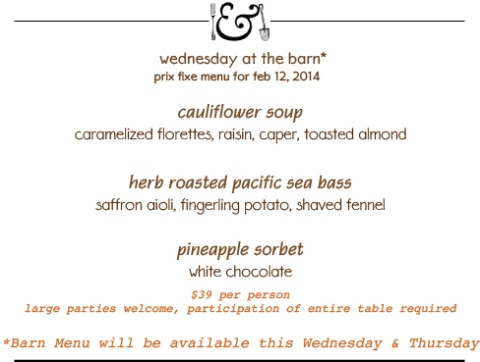
From Us to You...
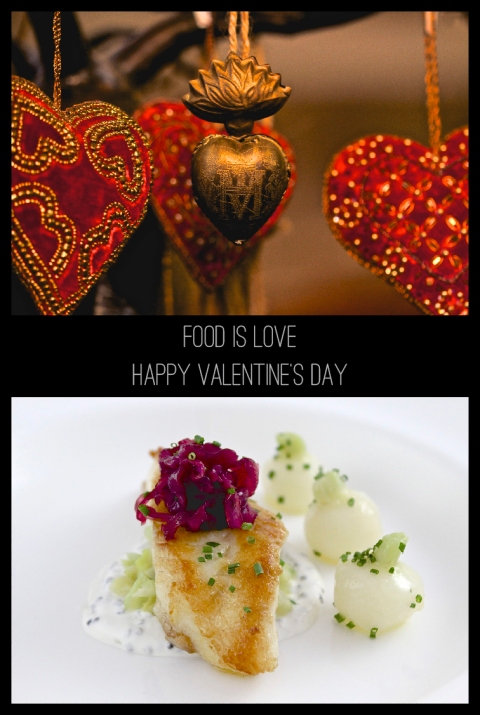
All text Jil Hales. Photos © Jil Hales
Viewing entries tagged
valentines day menu



All text Jil Hales. Photos © Jil Hales

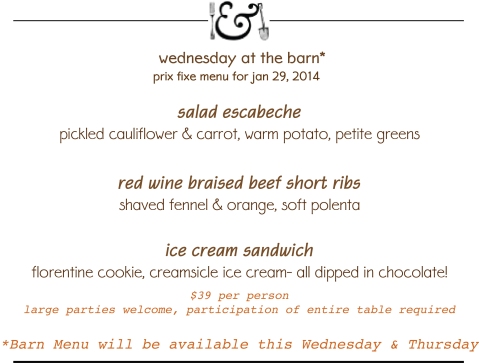
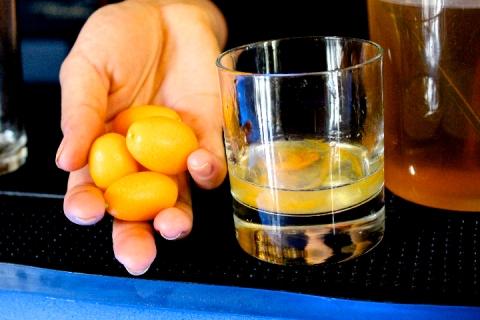
Valentine cocktails should be capricious, with that air before the storm anticipation. Romantic of course, and sensual. Suggestive.
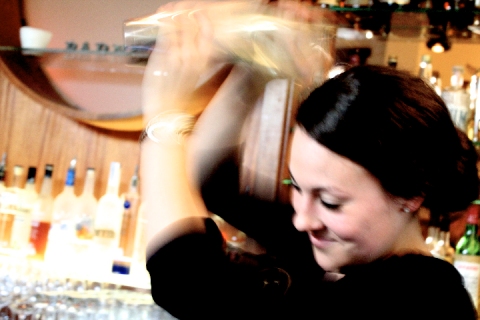
Barndiva is bringing it all with a beautiful menu for our Valentine's Eve dinner ~ while the bar will be shaking up some classic favorites in addition to a new sparkling cocktail ~ Fruit as Love ~ which Rachel just created featuring house-infused kumquat vodka, Damiana syrup, fresh citrus, Prosecco and pomegranate pips.
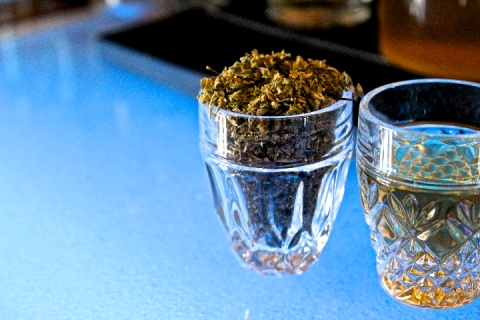
Damiana is known as lover's tea because of its legendary abilities to induce erotic dreams and increase arousal ...
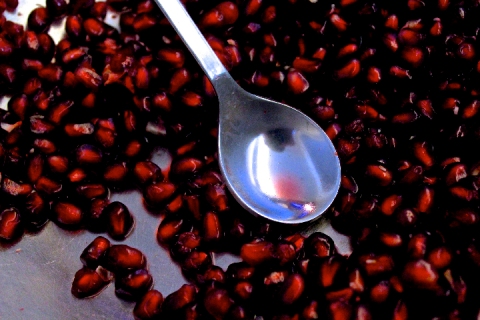
while pomegranates are the original love apple going all the way back to you know who... and that tree.
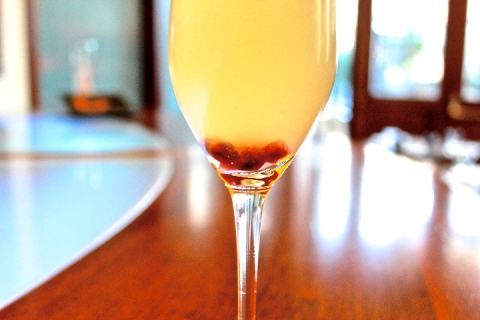
All text Jil Hales. Photos © Jil Hales
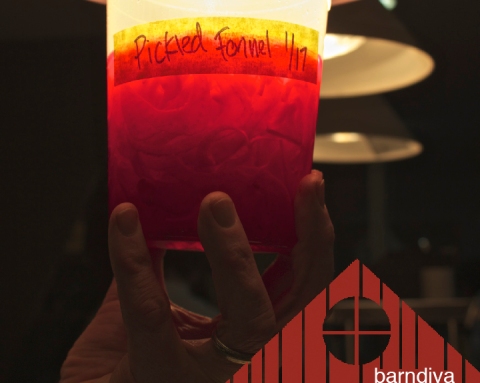
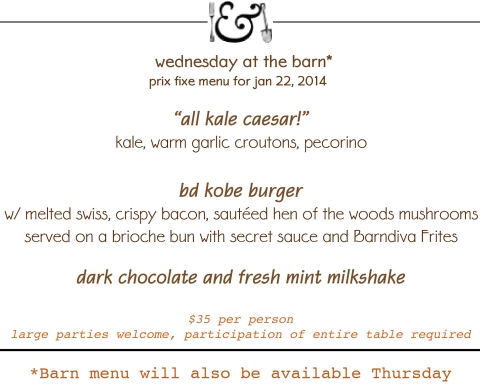

All text Jil Hales. Photos © Jil Hales
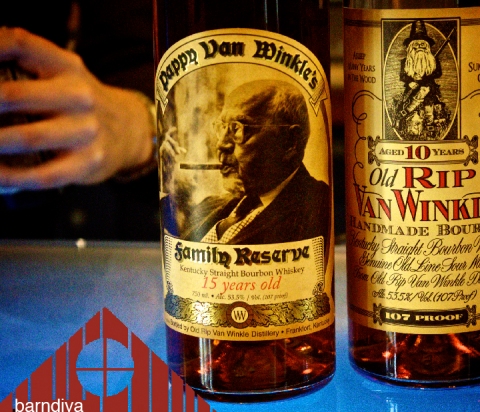
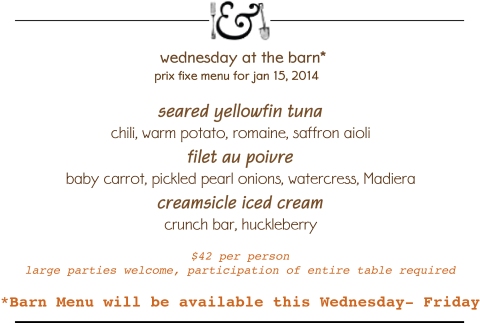
Last week's blog about the ease of throwing together a snack instead of just buying one got me thinking about all the other store-bought shortcuts we take that aren’t as satisfying as they could be ~ and don’t really save us time or money. Chimichurri is a great example of a wonderful, easy to make condiment that simply does not taste as good when you don’t make it fresh.
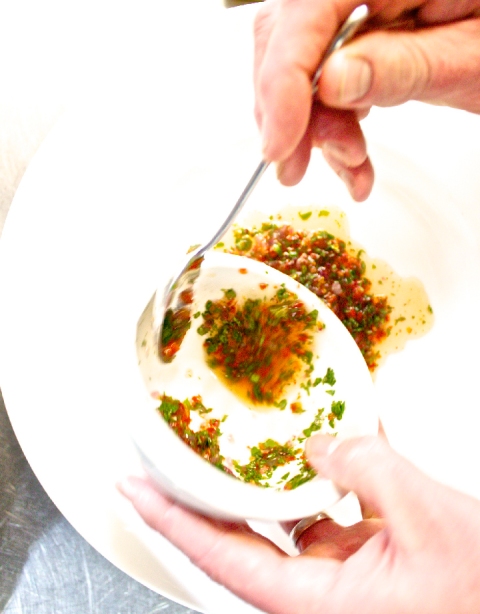
Ryan’s definition strays from the classic Argentine version which traditionally has garlic and parsley, but if anything he expands the spirit of the sauce with gentle heat and great green notes. For a Chimichurri we threw together in a few minutes for staff meal this week Chef used cilantro, mint, chervil, chives and parsley. Almost any fresh herb will do ~ what's delicious about the sauce is the combination of the selected herbs, a pickling compound with something in it to spark the heat, and Virgin Olive Oil.
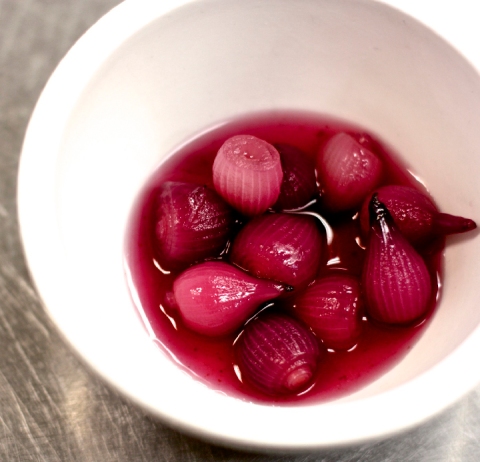
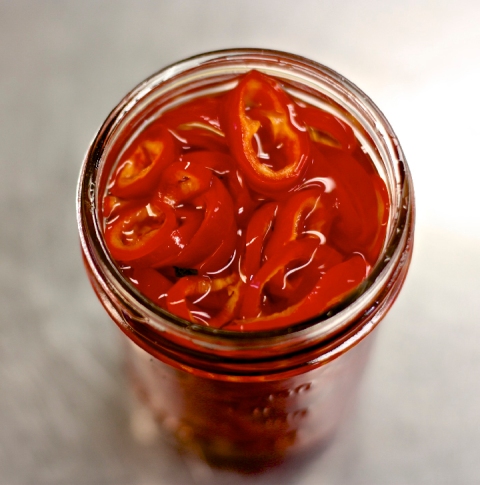
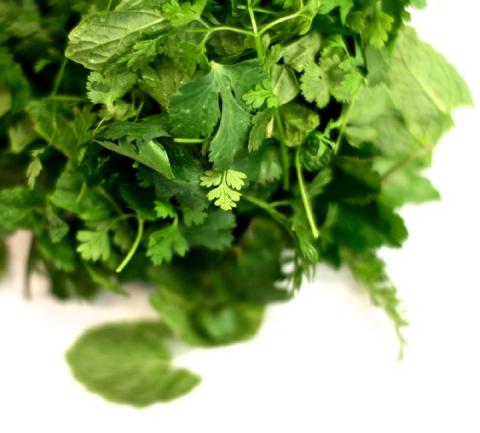
Ryan’s definition strays from the classic Argentine version which traditionally has garlic and parsley, but if anything he expands the spirit of the sauce with gentle heat and great green notes. For a Chimichurri we threw together in a few minutes for staff meal this week Chef used cilantro, mint, chervil, chives and parsley. Almost any fresh herb will do ~ what's delicious about the sauce is the combination of the selected herbs, a pickling compound with something in it to spark the heat, and Virgin Olive Oil.
We used pickled Fresno chilies and red pearl onions, which Chef always seems to have on hand. When it comes to the brine, unless you are longing for a signature pickle, equal parts Champagne vinegar and sugar will get you where you want to go, deliciously, in record time. The only things you need pay attention to for a fail-proof chimichurri is using a good quality VOO and remembering to cut ingredients into equal size. It may take an extra minute or two but trust me on this ~ cut them ridiculously small and uniform. You can pickle almost any raw ingredient this way in as little as 30 minutes....and it will keep all week. Always chop and add the herbs and oil just before serving.
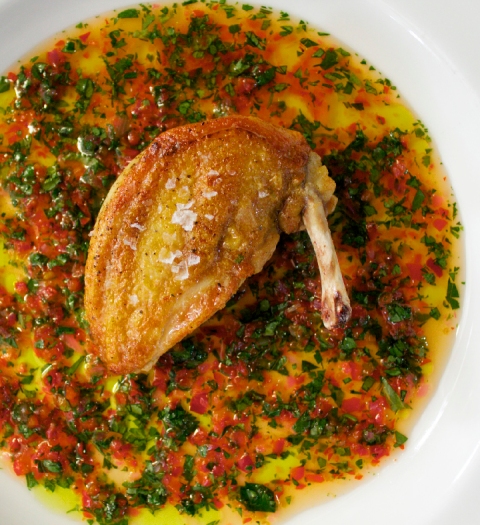
Chicken, fish, especially grilled steak ~ there is almost no protein that doesn't love a freshly made chimichurri.
Get out those knives.
All text Jil Hales. Photos © Jil Hales
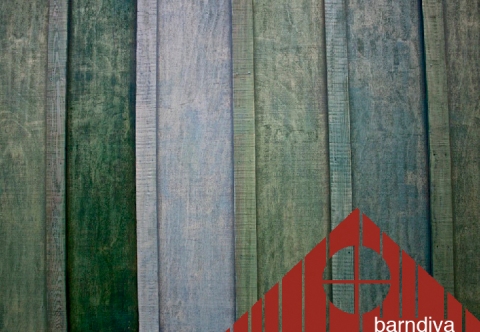

At the end of the day, kitchens are kitchens... we get hungry, we raid the fridge. Here at the barn, while something we throw together on the fly may provide interesting combinations that eventually end up in the dining room, mostly they do what a snack does best ~ give us a few minutes to relax and re-fuel before dinner service.
One of the saddest things about the way Americans eat now is how dependent we've become on the ease of opening a bag of nutrient empty, preservative loaded junk instead of tossing something fresh together. Time should never be the issue: Ryan threw together this snack of Mandarin Creamsicle Ice Cream and Valencia orange segments over a mound of crushed almond streusel in less than five minutes. The only chefy thing he did was quenelle the ice cream and shave some orange rind over the dish. Talk about fast ~ did you know you can 'peel' an orange in five seconds by just swiftly slicing off the sides? Gets rid of the pith, making it easier to liberate the segments. And oh, that shaved rind made all the difference ~ a nice tart top note to the creaminess of Octavio's ice cream.
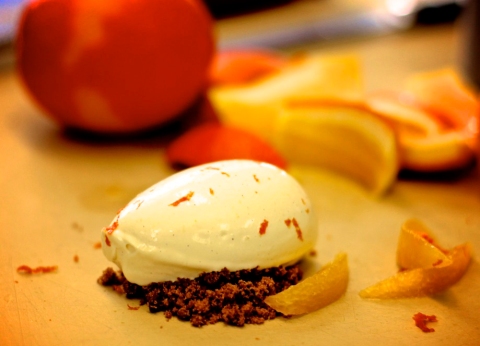
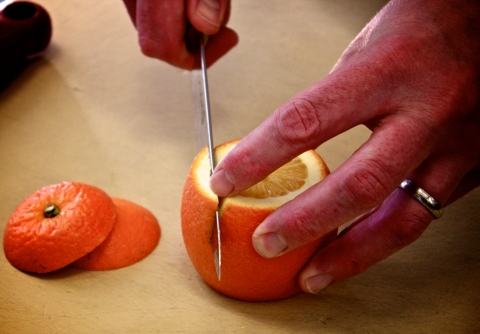
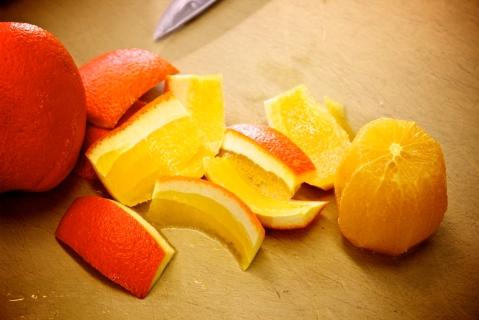
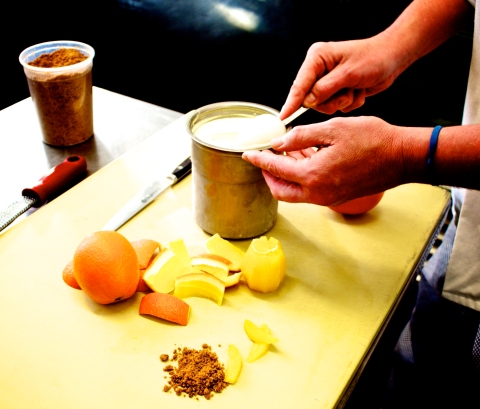
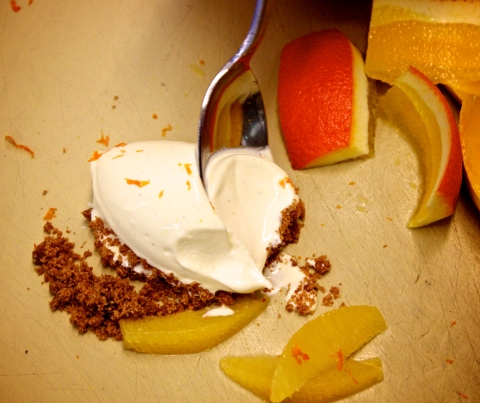
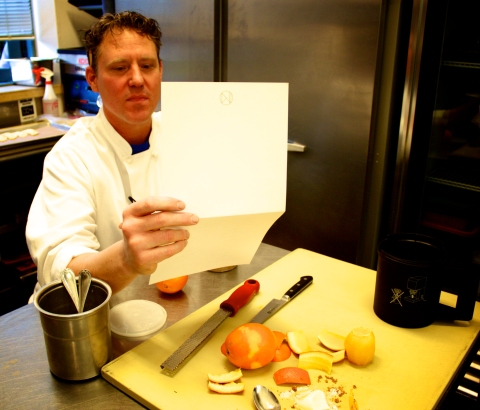
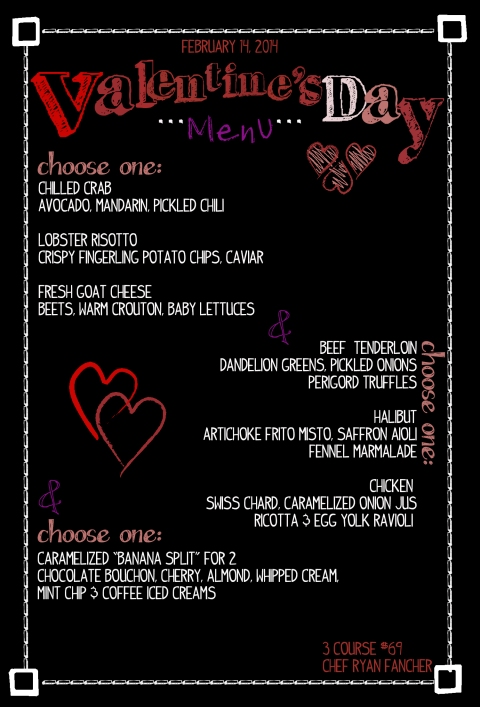
All text Jil Hales. Photos © Jil Hales
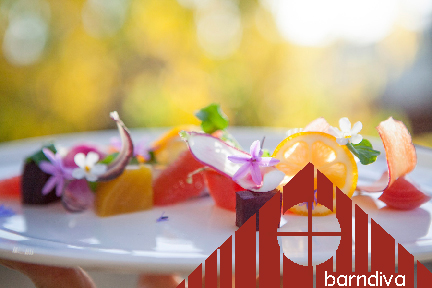

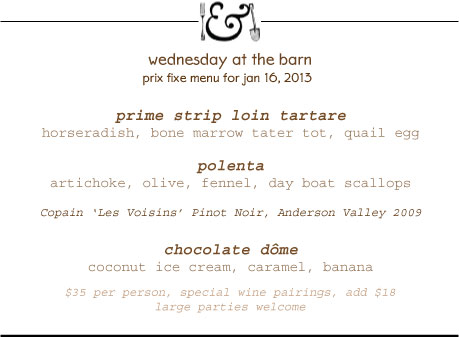
Photo Credit: Matt Edge. Valentine's Menu: K2pdesigns

 Squab may look like baby chicken, but with a thicker layer of fat beneath the skin these farmed gamebirds react to heat more like duck. Cooked properly the dark meat is rich and delicious. Before I tasted this dish the best squab I ever had was at St. John’s in London, where they grill and serve the heart and liver alongside the whole bird, as close to nose to tail as you get with poultry.
Squab may look like baby chicken, but with a thicker layer of fat beneath the skin these farmed gamebirds react to heat more like duck. Cooked properly the dark meat is rich and delicious. Before I tasted this dish the best squab I ever had was at St. John’s in London, where they grill and serve the heart and liver alongside the whole bird, as close to nose to tail as you get with poultry.
 Ryan used two kinds of sage in the dish. He stuffed the birds with garden sage before searing and oven roasting them; for plating, he pulled the petals off the flowering spikes of the pineapple sage we have blooming in the garden as if it were spring ~ probably as confused as we are by the unseasonably warm weather. Alongside the lush purple velvet of the huckleberries, the edible flowers added a tropical note of color to a dish which otherwise would have been all golden hued brown. We sourced our pineapple sage from one of Occidental Arts and Ecology's popular plant sales a few seasons ago. Its fragrant leaves are wonderful in cocktails.
Ryan used two kinds of sage in the dish. He stuffed the birds with garden sage before searing and oven roasting them; for plating, he pulled the petals off the flowering spikes of the pineapple sage we have blooming in the garden as if it were spring ~ probably as confused as we are by the unseasonably warm weather. Alongside the lush purple velvet of the huckleberries, the edible flowers added a tropical note of color to a dish which otherwise would have been all golden hued brown. We sourced our pineapple sage from one of Occidental Arts and Ecology's popular plant sales a few seasons ago. Its fragrant leaves are wonderful in cocktails.
 Chef cooked the squab in three stages. First, over high heat he seared the bird on all sides (including the ends), then popped it in the oven to roast before finishing back in the pan, basting furiously with garlic, thyme and butter as the skin caramelized. It's a labor intensive way to cook each bird but you can't argue with the result: a brilliantly crisp skin with meat the consistency of a medium rare steak. Seeing red when you cut into a gamebird takes some getting used to, but no worries: what the eye perceives as underdone, the mouth will soon convince you is moist and bursting with flavor.
Chef cooked the squab in three stages. First, over high heat he seared the bird on all sides (including the ends), then popped it in the oven to roast before finishing back in the pan, basting furiously with garlic, thyme and butter as the skin caramelized. It's a labor intensive way to cook each bird but you can't argue with the result: a brilliantly crisp skin with meat the consistency of a medium rare steak. Seeing red when you cut into a gamebird takes some getting used to, but no worries: what the eye perceives as underdone, the mouth will soon convince you is moist and bursting with flavor.
Ryan served the squab over a bed of sautéed endive. He balanced the breast of the bird over the leg and thigh, placed a triangle of toast on top, grated the fois and then dribbled huckleberry sauce over the dish like they were pancakes on Sunday. There was crunch and then creaminess from the shaved fois which bumped up nicely against the sharp tang of the huckleberries and the soft herbaceous notes of the sage. Surprisingly, if you take fois gras directly from the refrigerator and use a fine microplaner, it grates into flakes as light as snow. They melt on the tongue, playing off the subtle but distinctly gamy flavor of the squab.
Strip away all the beautiful finesse Ryan brings to this dish and you could well imagine eating it on the ridge in Philo 100 years ago when all the ingredients could be found without leaving the farm. Though most of the larger animals have fled farther north in the last decade ~ it’s five years since we’ve seen a wild boar around our place ~ we still have small game birds in abundance, wild sage grows everywhere, and huckleberries line the road in from Greenwood Ridge, plentiful when the deer don’t get them first. Even in low water years, shaded by the towering conifers and redwoods, they are one of the great delights of foraging.
 Last week Rachel and I came up with a great cocktail for the Winter Menu called What A Girl Wants. It would have been fine to star with the Valentine’s Menu, but I’m getting (happily) used to the fact that our new bar manager is never satisfied with one drink when she can come up with two.
Last week Rachel and I came up with a great cocktail for the Winter Menu called What A Girl Wants. It would have been fine to star with the Valentine’s Menu, but I’m getting (happily) used to the fact that our new bar manager is never satisfied with one drink when she can come up with two.
Be Mine? is without a doubt a more girlie drink than What a Girl Wants ~ which is fine, as the "girls" who frequent our bar come in all temperatures, cool to smoking hot. Made with Tito’s handmade vodka and fresh Meyer Lemon Juice, with a hint of lavender infused simple syrup, it’s finished with a foamy egg white which Rachel will use as a canvas on the night for a simple Crème Yvette heart.
All text Jil Hales. All photos Jil Hales (unless otherwise noted). Valentine's artwork K2pdesigns.

 The Cacao bean is one of the oldest and most versatile spices in history with thousands of sweet and savory flavor profiles for a Chef to play with, but when it comes to eating it and satisfying that craving for chocolate that has been around since the Aztec's, your best bet is to go big or go home. Scientists tell us our attraction to chocolate comes from a chemical reaction to the alkaloids in cocoa solids which produce serotonin and its trigger cousin tryptophane in the brain. Tryptophane is that very neat amino acid thought to regulate mood, appetite, sleep ~ all the stuff which can make or break your day. Sadly, it doesn’t matter if you get there after a virtuous ten mile run or a guilty session at the chocotelier, when tryptophane floods the system with endorphins, it's gonna feel a lot like happiness.
The Cacao bean is one of the oldest and most versatile spices in history with thousands of sweet and savory flavor profiles for a Chef to play with, but when it comes to eating it and satisfying that craving for chocolate that has been around since the Aztec's, your best bet is to go big or go home. Scientists tell us our attraction to chocolate comes from a chemical reaction to the alkaloids in cocoa solids which produce serotonin and its trigger cousin tryptophane in the brain. Tryptophane is that very neat amino acid thought to regulate mood, appetite, sleep ~ all the stuff which can make or break your day. Sadly, it doesn’t matter if you get there after a virtuous ten mile run or a guilty session at the chocotelier, when tryptophane floods the system with endorphins, it's gonna feel a lot like happiness.
The fact that we mix chocolate with sugar to counteract its natural bitterness also inadvertently contributes to the psycho-chemical reasons we love it, as sugar also acts to slow down our fight or flight impulses. The thing to keep in mind if you plan to use the tryptophane angle to justify a chocolate jones is that it only occurs in cocoa solids. Quality chocolate can be as high as 80% cocoa solids at the top of the ‘chocolate’ spectrum, but white chocolate, yummy as it may look and taste, actually contains no cocoa solids at all.
 When I crave a brief out of body experience from chocolate I want primo bittersweet nibs pulverized into submission, mixed with cream and nuts and fruit. Which is why we invented The Bomb.
When I crave a brief out of body experience from chocolate I want primo bittersweet nibs pulverized into submission, mixed with cream and nuts and fruit. Which is why we invented The Bomb.
 The first things Octavio makes is the last you eat: Caramelized Hazelnuts flecked with dark chocolate, rolled with a bit of flour and chilled. This praline feuilletine provides the base for a tower of vanilla crème frâiche and whipped cream over which he pours a shiny carapace of 80% dark chocolate ganache. Light meets dark, sweet meets bitter, crunchy meets heavenly soft. It's a chocolate dessert which has everything, even an historical pedigree as we are now using Guittard Chocolate ~ the only remaining San Francisco Chocolate company still family owned.
The first things Octavio makes is the last you eat: Caramelized Hazelnuts flecked with dark chocolate, rolled with a bit of flour and chilled. This praline feuilletine provides the base for a tower of vanilla crème frâiche and whipped cream over which he pours a shiny carapace of 80% dark chocolate ganache. Light meets dark, sweet meets bitter, crunchy meets heavenly soft. It's a chocolate dessert which has everything, even an historical pedigree as we are now using Guittard Chocolate ~ the only remaining San Francisco Chocolate company still family owned.
 In summer we love to pair the bomb with the sweetest red berries we can find; in winter citrus is the perfect foil. When Vicki and Bruce Pate dropped off a bag of mixed oranges from Serendipity Farms, Octavio made a gastrique out of them using their tartness to play against the dark and light nuances already going on in the dish. It was a beautiful color. Chef trailed it like lattice work across the plate, connecting the bomb with the final element of this elegant romantic dessert ~ a house-made coconut ice cream.
In summer we love to pair the bomb with the sweetest red berries we can find; in winter citrus is the perfect foil. When Vicki and Bruce Pate dropped off a bag of mixed oranges from Serendipity Farms, Octavio made a gastrique out of them using their tartness to play against the dark and light nuances already going on in the dish. It was a beautiful color. Chef trailed it like lattice work across the plate, connecting the bomb with the final element of this elegant romantic dessert ~ a house-made coconut ice cream.
 Octavio has been working on a stellar recipe for coconut ice cream that will be part of our upcoming Oscar Night dinner where each course is inspired by the country of origin of an Oscar Nominee. That dessert will also have compressed pineapple and Kona Coffee mousse as the dessert course is themed to Hawaii, very much the heart of The Descendants.
Octavio has been working on a stellar recipe for coconut ice cream that will be part of our upcoming Oscar Night dinner where each course is inspired by the country of origin of an Oscar Nominee. That dessert will also have compressed pineapple and Kona Coffee mousse as the dessert course is themed to Hawaii, very much the heart of The Descendants.
We couldn't help but wonder how Big O's coconut ice cream would pair with chocolate. In a similar way that the flakes of Maldon Salt on top of the dome serve to extend the complexity of the dark chocolate, the ice cream momentarily stuns the palate, taking your mind away from chocolate altogether, making the return to its luxurious silkiness all the more decadent. It was so good, we decided to put the pairing on our Valentine's Menu.
Like I said, go big or go home.
All text Jil Hales. All photos Jil Hales and Dawid Jaworski (unless otherwise noted).
 Growing up in LA I had a good friend whose father often disappeared on weekends to go mushroom hunting. Everybody, including his wife, thought it was the weirdest thing to do. This was in the years before being weird was cool; a few years before ‘shrooming’ took on a whole other significance.
Growing up in LA I had a good friend whose father often disappeared on weekends to go mushroom hunting. Everybody, including his wife, thought it was the weirdest thing to do. This was in the years before being weird was cool; a few years before ‘shrooming’ took on a whole other significance.
I think about my friend’s dad from time to time because looking back now I realize he was the only person I’d ever met that went into the wild to look for food. Foraging was something people only did when they didn’t have access to a supermarket; it never would have occurred to me then that it might even be preferable to needing one.
 There’s no telling what he would think if he were around today, with mushroom foraging weekends offered up and down the North Coast, wild mushroom classes in every cooking school, and shelves in local bookstores stocked with books on mycology. Last week I even heard tell of an app that can identify mushrooms you find in the wild instantly by simply uploading an image of them. Here in Healdsburg, as part of Epicurean Winter, for one week in February (Mushroom Week!) you will be able to restaurant hop across town, eating a different dish starring a locally foraged mushroom at each stop.
There’s no telling what he would think if he were around today, with mushroom foraging weekends offered up and down the North Coast, wild mushroom classes in every cooking school, and shelves in local bookstores stocked with books on mycology. Last week I even heard tell of an app that can identify mushrooms you find in the wild instantly by simply uploading an image of them. Here in Healdsburg, as part of Epicurean Winter, for one week in February (Mushroom Week!) you will be able to restaurant hop across town, eating a different dish starring a locally foraged mushroom at each stop.
But for certain folks, like Corey Gates and the generations of families like his, who have lived and foraged in Northern California for the past century, mushroom hunting has never been geeky or a food fad. It has always been just a part of their lives, a cherished piece of their culinary history.
Corey’s grandmother first took him foraging for wild Chanterelles at the age of three; over the years she taught him all she knew, making him swear never to reveal their secret spots ~ always the number one mushroom hunting rule, which took on extra significance after she died. For Corey, foraging for mushrooms went from a hobby to a passion to a business, The Mushroom Hunters.
On Tuesday he stopped by to show me his bounty from what he considered to be a good day foraging the mountains around Ukiah. All but one belonged to the genus Cantharellus, aka Chanterelles. He had California Golds (C. formosus); Black Trumpets (C. cornucopioides); rarer whites (C. subalbidus) and Yellowfoot (C. tubaeformis). He was most proud of the beautiful cream colored Hedgehogs (Hydnum repandum), which are technically not in the same genus. They are great eating mushrooms, if you don't get put off by the tiny razor teeth which make them look like they belong in a Tim Burton movie. Hedgehogs are delicious, with a wonderful earthy, almost nutty aroma.
Ryan loves to caramelized wild mushrooms; in truth he is not a big fan up cutting them up because they can go too soft as they sweat, resulting in a less than desirable texture. Cut up they are best when used in a sauce, or a dish like Ragu where the flavor is paramount. With a few exceptions he prefers his mushrooms small, the better to be served whole. He likes Morels in a nice Madeira sauce, rich and creamy; his Girolles and King Trumpets grilled, preferably over an open flame; meaty Hen of the Woods, sweet Chanterelles and woody Porcinis are best for him roasted, lightly dressed with a nice sherry vinaigrette. Last week he quickly sautéed white Chanterelles serving them with a crispy duck leg, sliced duck breast and root vegetables on onion soubise.
 A few months ago I wrote a bit about the complex taxonomic history of fungus and their mycorrhizal (symbiotic) relationship to the conifers, oaks and redwoods that grow in abundance throughout the North Coast. Sonoma, and especially Mendocino counties benefit greatly from mixed new and old growth forests. That, along with our mild extended winters make this part of the world prime mushroom hunting terrain ~ hell, it's almost impossible to take a walk in the country from January on and not come upon some growing wild. All the more reason to learn some salient features it takes to begin to identify them. Forget eating any wild mushroom you haven't foraged with an expert ~ just identifying them can be great fun. Check out the graph below courtesy of (thankfully still) free file sharing Wikipedia. Learn how to forage and if nothing else, you'll never go hungry in the forest. (As long as our forests are there ~ but that's another blog altogether).
A few months ago I wrote a bit about the complex taxonomic history of fungus and their mycorrhizal (symbiotic) relationship to the conifers, oaks and redwoods that grow in abundance throughout the North Coast. Sonoma, and especially Mendocino counties benefit greatly from mixed new and old growth forests. That, along with our mild extended winters make this part of the world prime mushroom hunting terrain ~ hell, it's almost impossible to take a walk in the country from January on and not come upon some growing wild. All the more reason to learn some salient features it takes to begin to identify them. Forget eating any wild mushroom you haven't foraged with an expert ~ just identifying them can be great fun. Check out the graph below courtesy of (thankfully still) free file sharing Wikipedia. Learn how to forage and if nothing else, you'll never go hungry in the forest. (As long as our forests are there ~ but that's another blog altogether).
All text Jil Hales. All photos Jil Hales and Dawid Jaworski (unless otherwise noted).